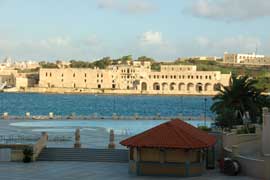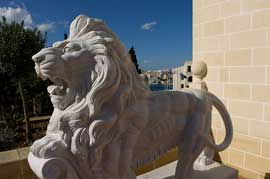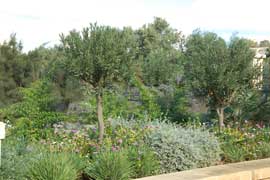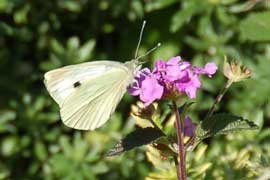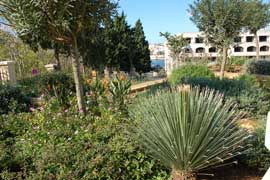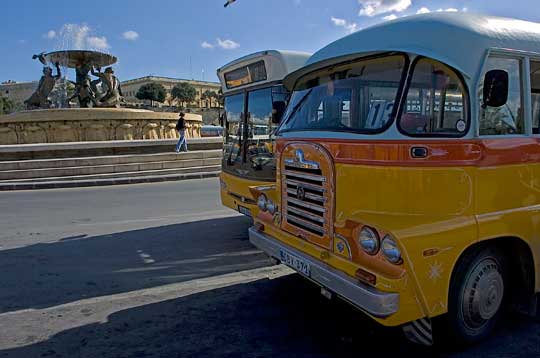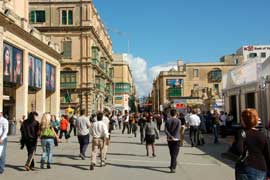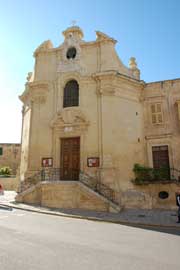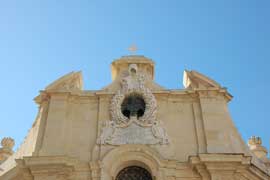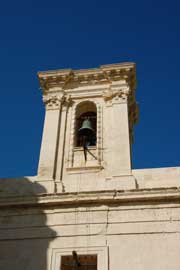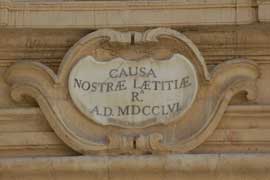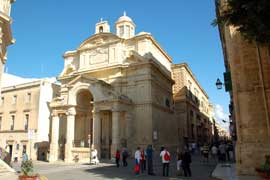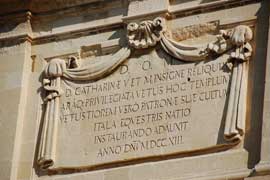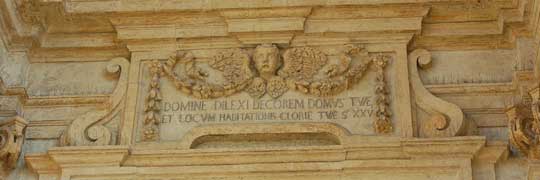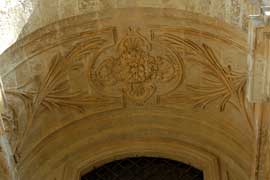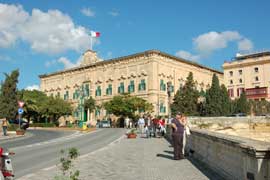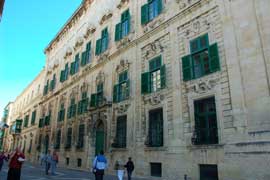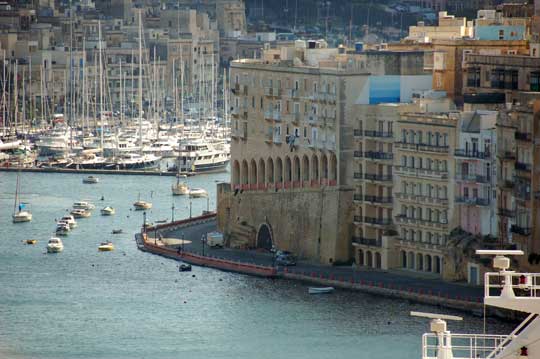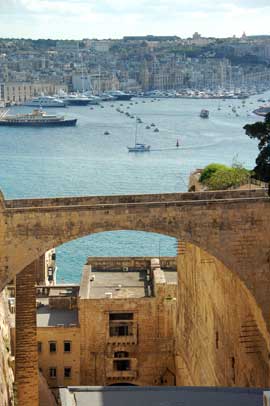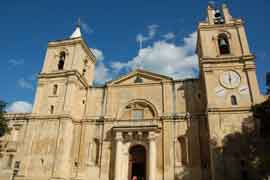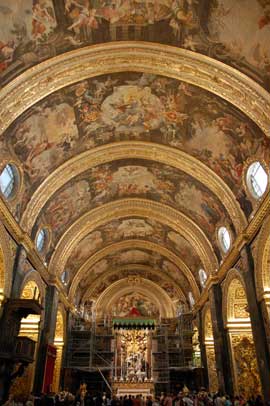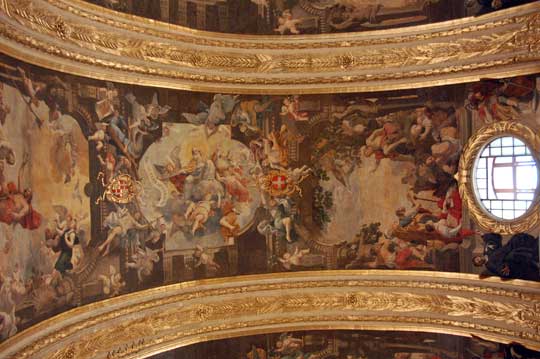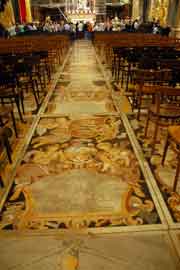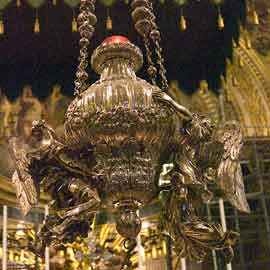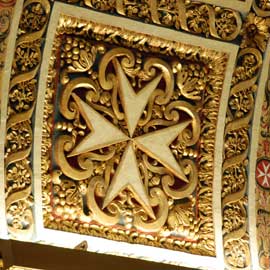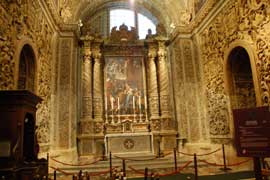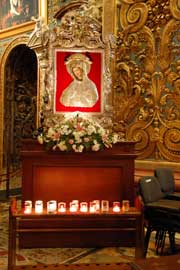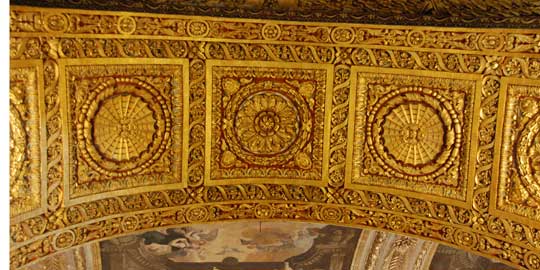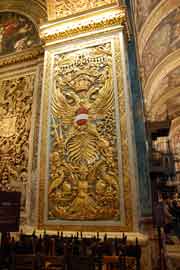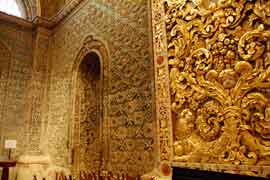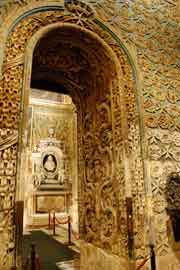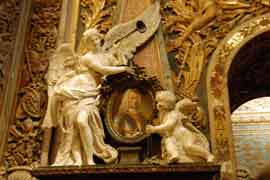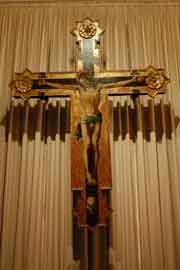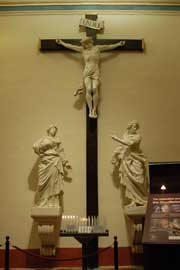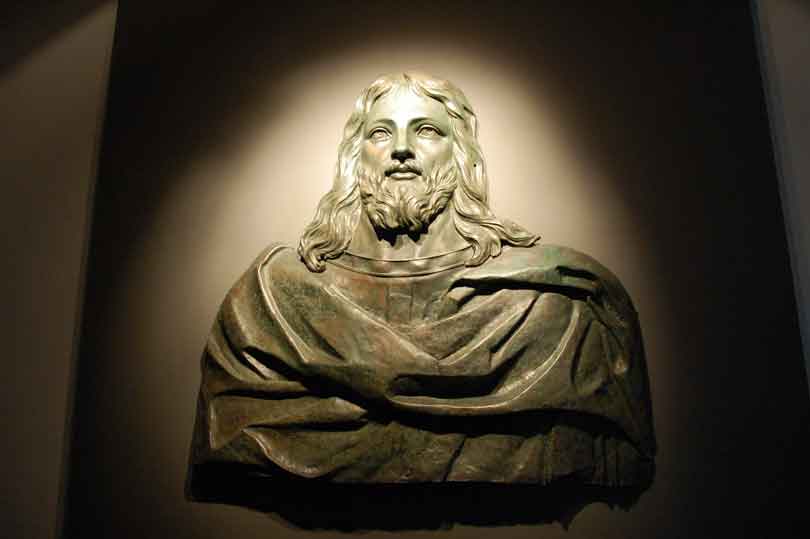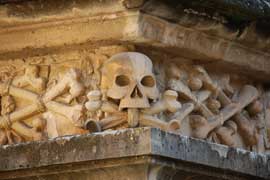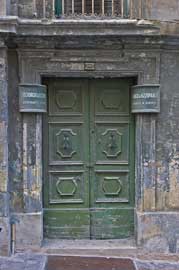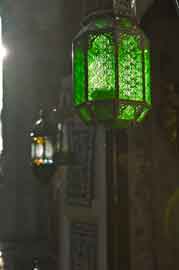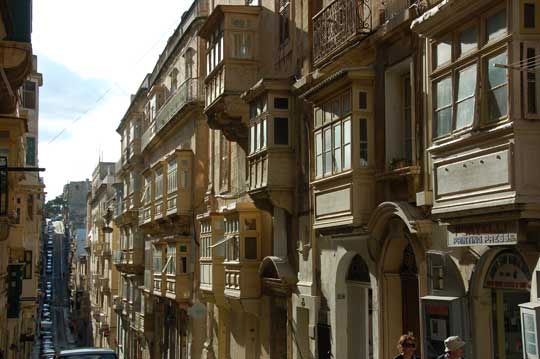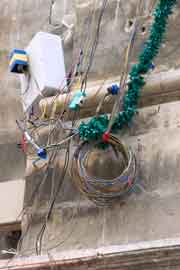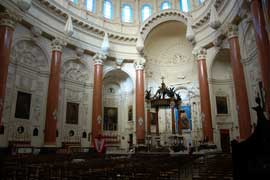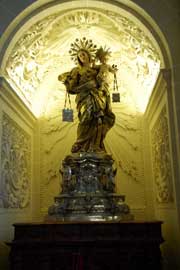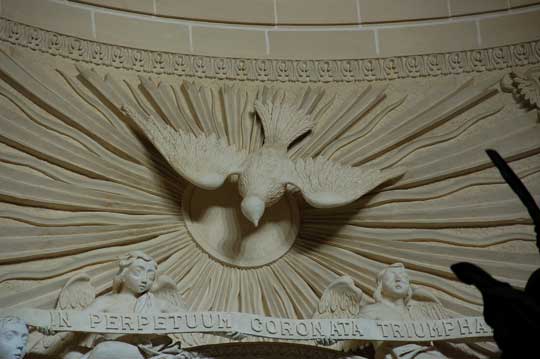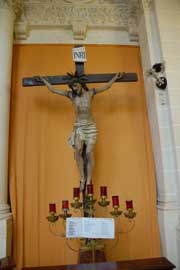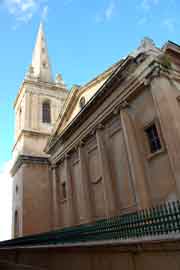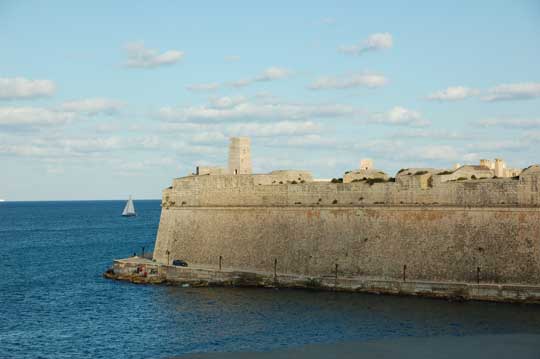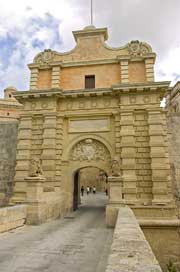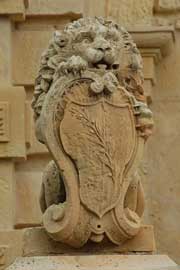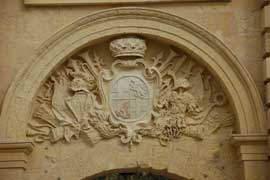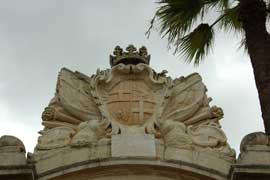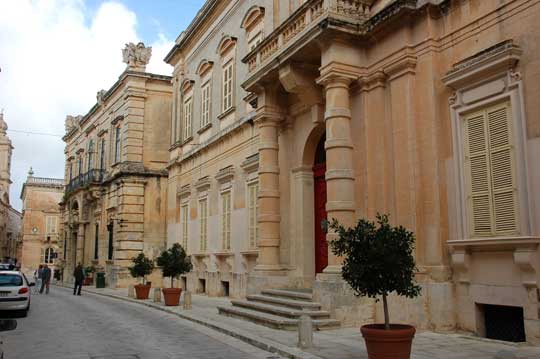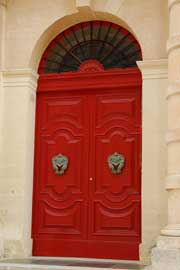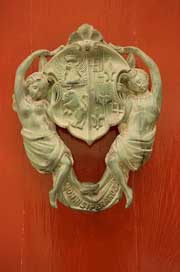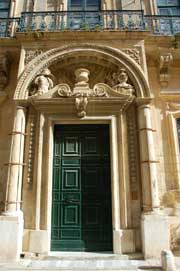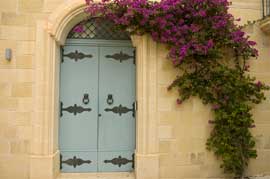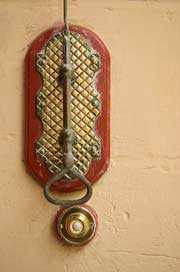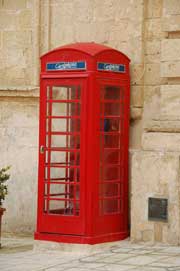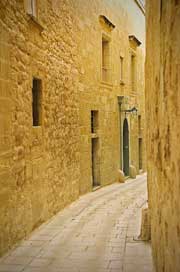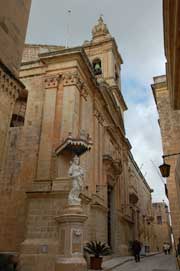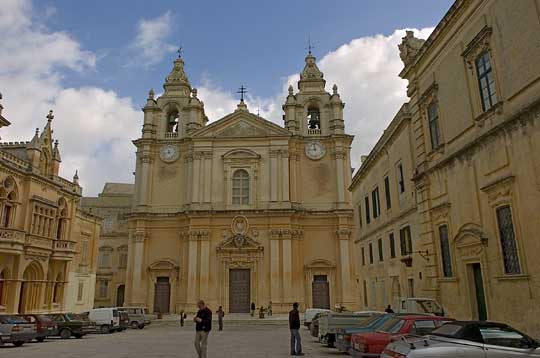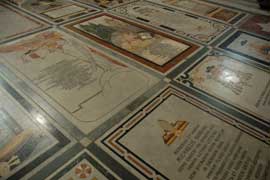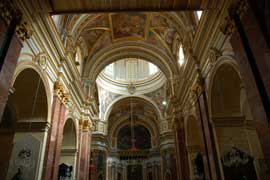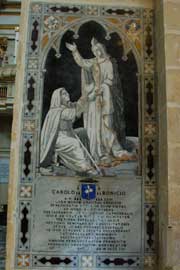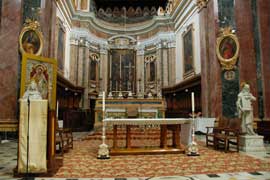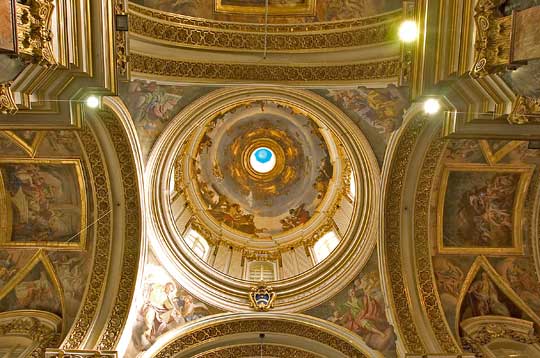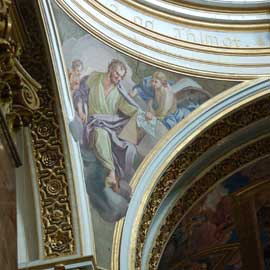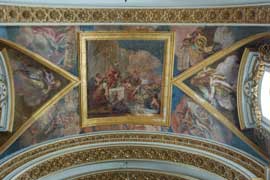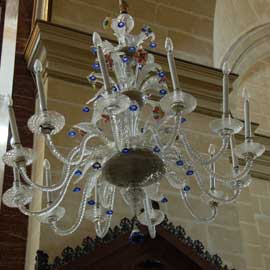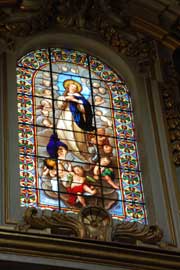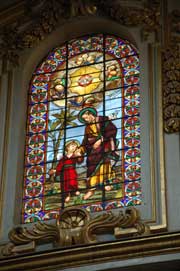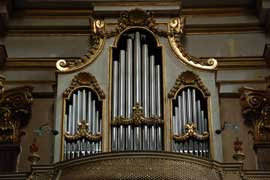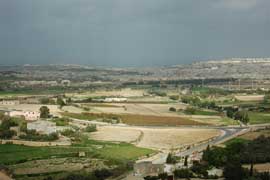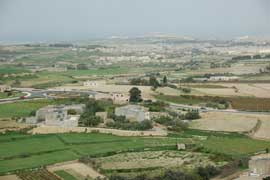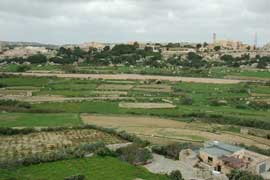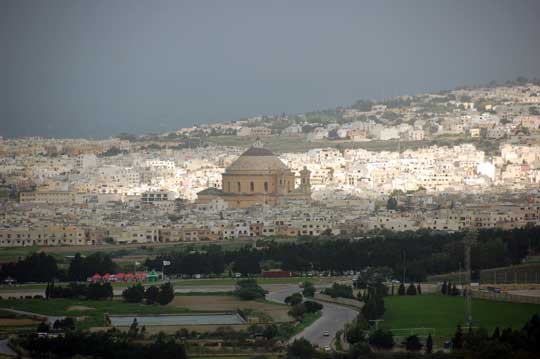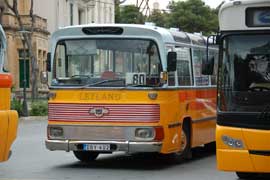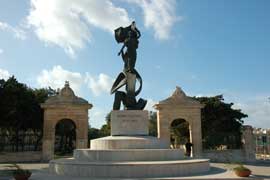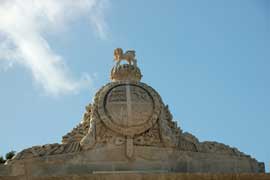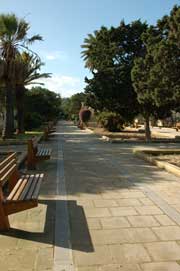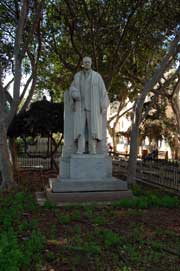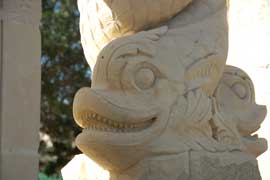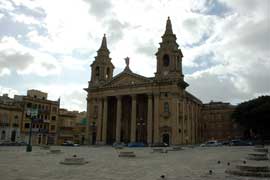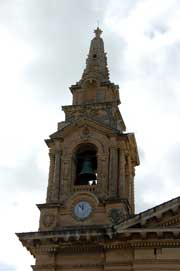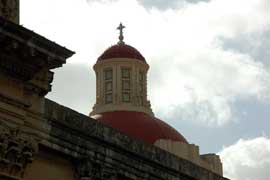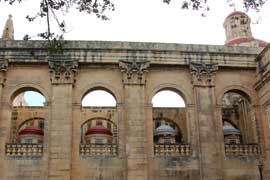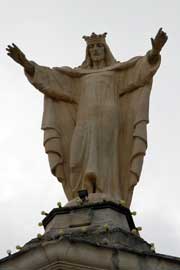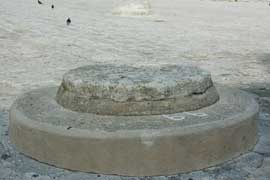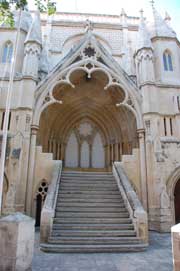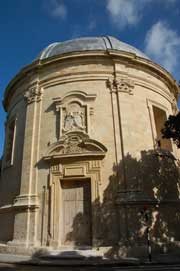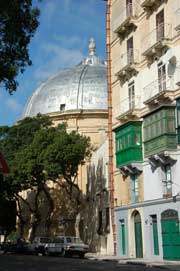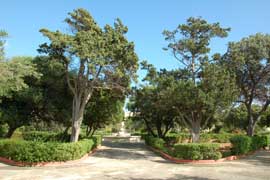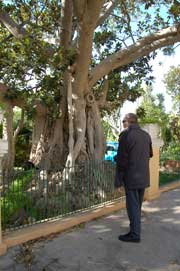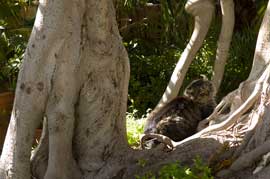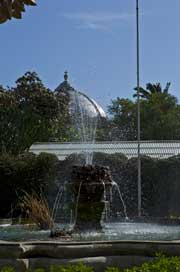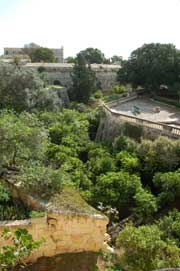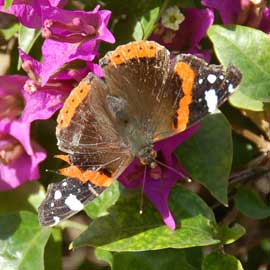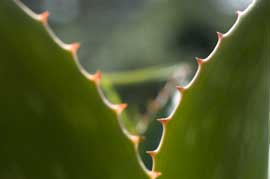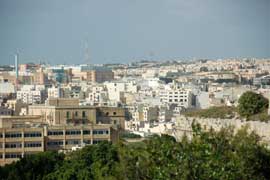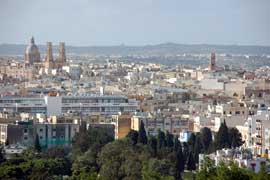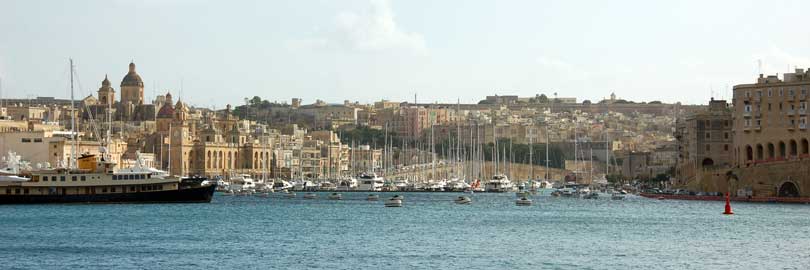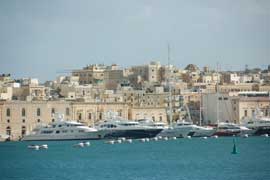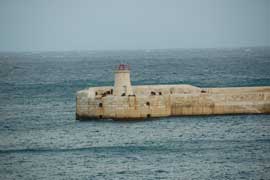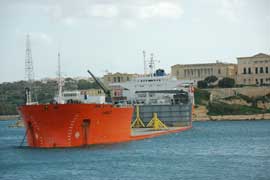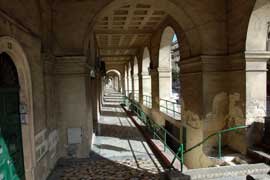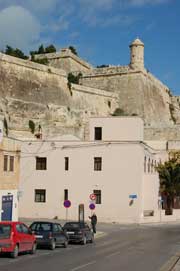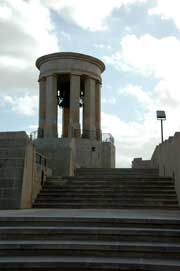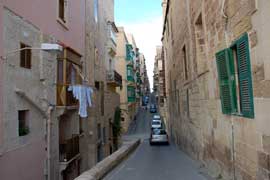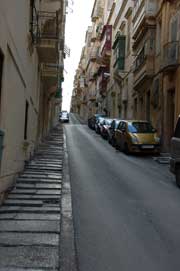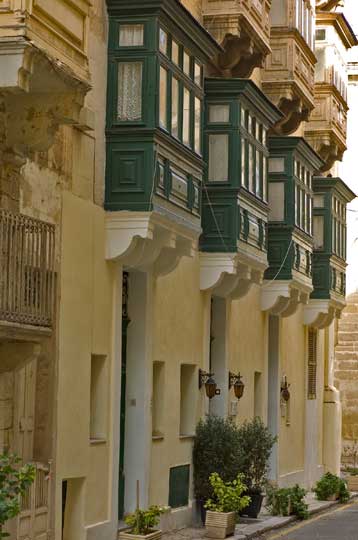Malta
|
Where shall we go next February for our wedding anniversary? So began the discussion. Malta looked nice but having asked a couple of folk who'd been there they said there wouldn't be enough for us two to do for a whole week so, unusually for us, we listened to them and decided to come for just a weekend instead. We ran out of time. There was stacks to do and loads to see.
|
|
|
We stayed at the Grand Excelsior Hotel just outside the city walls (Valletta is a walled city). It was a lovely 5* hotel but the pool and spa had only just been refurb'd and the water hadn't heated up so they were a bit disappointing. The steam room and sauna were pretty good though so we used them instead.
The massage I had was lovely and the food was superb, the service was excellent and the view from our balcony (see above and left) was lovely so, all in all, a good choice.
|
|
|
|
|
The hotel also had some lovely garden areas as can be seen in the above photos.
We arrived late Thursday afternoon and ate out having had a wander around at a restaurant called Malata in Republic Square - we can definitely recommend it. Both food and service were first class.
|
|
Friday we took ourselves off for a self guided walk round the city. To get to the city itself was a short walk uphill (Valletta is very hilly). First we needed to walk through the bus station! The fountain in the background is the Triton Fountain.
The city gate itself was nothing to write home about. It looked very modern and like it didn't fit. This was possibly because there was some sort of temporary structure around it for a musician / promotion. Once you'd got through the gate, it was a bustling city.
|
|
There were loads of churches and c.98% of the population is Catholic. First check point on our tour was the Church of Our Lady of Victories (La Vittoria). It was built in 1567 to commemorate the end of the siege and is the oldest building in Valletta
|
|
|
|
|
|
Just across the road from here was the Church of Saint Catherine of Italy.
|
|
|
| |
|
|
Our next check point was the Auberge de Castille et Leon. It was near the ramparts and dates from 1574 but the facade is later - added mid 18th century. It is now the prime minister's office and seemed to have a few police / security people around it but only at the front. |
|
From there we admired the sea views - we were quite high at this point. |
|
|
The main church in Valletta is St. John's Co-Cathedral. Co-Cathedral as it's two cathedrals in one!
The plain outside is 16th century and it was the Conventual Church if the Order of St John until 1798. The inside is incredibly ornate.
The Knights were noblemen from the most important families of Europe. Their mission was to protect the Catholic faith from the attacks of the Ottoman Turks. After the attack known as the Great Siege in 1565 it seems that the Knights vowed to turn Malta into a fortress that befitted a military Order.
When they got promotion, the Knights of St John had to make a gift to the church and it seemed to us that they all tried to outdo each other.
The barrel vaulted ceiling was amazing - see below. It was created by Mattia Preti and shows 18 episodes of St John the Baptist's life.
|
|
|
|
The floor is covered in tombstones of the knights and down each side of the church there are various chapels. Those that we could see (ie. not closed for prayer) included the chapel of the Langue of Germany, the Langue of France, the Langue of Italy an the Langue of Provence amongst others. Those that were deemed the most important are nearest to the altar. The area around the altar itself was covered in scaffolding for restoration but Jonathon managed to get a photo of the altar lamp (far right).
|
|
|
As a result of all the competion between the knights, the whole place was very highly decorated. We hardly knew where to look but when we first went in we were given audio guides so we could press a button and find out what we were standing near. That was really useful otherwise we would have been overwhelmed by it all. |
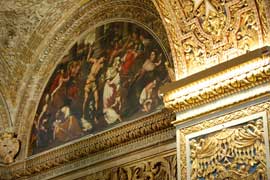
|
|
|
The three photos above are of the German langue (I think!). The altar is 17th century by Erardi.
Next to that is the Italian langue which is dedicated to St. Catherine and, as you can see, even the arches into these side chapels were highly ornate.
|
| |
|
|
|
Wherever we looked there was more ornamentation - it was incredible!
Our audio guide explained that a lot of the decoration depicted gruesome battle scenes or victories with people standing on moors' heads, heaps of dead soldiers etc etc. There were a lot of skulls and bones in the decor and they seemed really pleased to have a part of St John's forearm!
|
|
|
|
There were also a few crucifixes around the church. the first of these was a relatively simple wooden cross. |
| |
The second is known as the Crucifixion Group or the Golgotha Group. It arrived at St John's in 1653 but nobody seems to know where it originated from.
My favourite artwork was an image of Jesus. In a former life this sculpture lived at the harbour and had a body and used to welcome the visitors to the harbour. When it was brought inside it was cut down and draped. The way it was lit was beautiful.
|
|
|
|
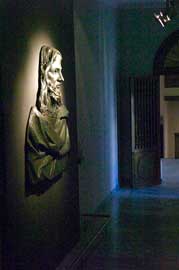
|
Jonathon took the photo from the side.
A good example of the skulls and bones I mentioned above was on the statue in the courtyard on the way out.
|
|
|
More wandering and we could admire the general street scenes. A lot of the streets are so steep you have to walk up and down steps to get from top to bottom.
The doors of Malta are quite famous - the left photo is a good example!
They also have what look like closed in balconies that seem to perch on the buildings. Although they look somewhat precarious they have obviously been there for many years so hopefully they're safe!
Although they are famous for their glass, the glass that caught Jonathon's eye was Moroccan!
The wiring on the bottom right also caught Jonathon's eye can't imagine why!
|
|
|
|
|
While we were strolling towards St Elmo's Point at the end of the island, we came across The Sanctuary Basilica of Our Lady of Mount Carmel. Founded in 1570 it was the first functionable church in Valletta but it was damaged by bombs in World War II and a new church was built, starting in 1958. It was a lovely light church - very different to the others we had visited. |
|
|
| |
|
Just before we got to St. Elmo's we passed St Paul's Cathedral, the Anglican cathedral, and were amused to see it was in the Diocese of Gibraltar! |
|
Finally we arrived at the end of the island and could see St. Elmo's Fort. Unfortunately we didn't have time to explore it so we intended to go back and see it properly one day. However, when we mentioned this to our concierge she was less than encouraging. Fort St. Elmo is not one of the forts that is maintained and several non desirable types hang out there apparently so she was concerned for our safety (although she took pains to point out that we wouldn't be mugged or anything)! |
| |
Saturday was supposed to be the day we went on a Round the Harbour cruise. However, the wind was so strong that none of the boats were setting off so we had to make other plans. One or two people had recommended Mdina, the former capital, so we decided to go there - by bus. Having seen some of the buses, we were ready for a bumpy ride and weren't too disappointed in that regard! They were very rickety and rattley but they got us there and back safely. |
|
Mdina, a UNESCO Heritage site, is another walled city and once again, we entered through a main city gate (Notabile Gate). There were lions on guard and very ornate carving in the gate.
Mdina is set on high ground away from the coast and is a natural defensive site. History says it's likely that Bronze Age people settled here. The Phoenicians called it Maleth and the Romans Melita. The Arabs renamed it Mdina and built 19m high walls around it leaving the poorer people in the outskirts in Rabat. Mdina was the capital until 1571 when the Knights made Valletta the capital instead.
|
|
|
|
The photo immediate left is at the top of the gateway into the Palazzo Vilhena / Natural History Museum, just through the gate but past the Dungeon which I refused to go into. |
Mdina had a much "posher" feel to it than Valletta - old money v. new I guess. It was a bit like Harrogate v. Leeds or Herculaneum v. Pompeii - plenty of examples wherever you look. |
|
|
As you can imagine, with such a posh place there were some very fancy doors for which Malta is famous. There were fancy handles and bell pulls too .... |
|
|
|
|
|
... not to mention the fancy balconies .... |
|
... but amazingly, they still have red phone boxes around the place! |
|
One of the most interesting aspects of Mdina was the narrow twisting streets - there were loads of these and they were great for strolling around. Mdina was nowhere near as busy as Valletta so it was much more peaceful walking about. Reminded me a bit of a dry Venice if you can imagine such a thing. |
|
There were, of course, a lot of convents, priories and churches often with discreet signs on the door so you knew it was a place of religion but sometimes more imposing. |
|
| |
The cathedral is St. Paul's. St Paul apparently crashed his boat on Malta all those years ago so there are a lot of churches etc dedicated to him. This square was lovely and there was the cathedral museum just round the corner on the right which was interesting too.
The two clocks on the towers are set at different times. One is correct and one is always wrong - this is to confuse the devil!
|
Inside, the cathedral was beautiful. As with St. John's in Valletta the floor was covered in marble tombstones but there the similarities ended really. |
|
The main attraction (if I can call it that) was the dome. Beautiful colours and it let in a lot of light. Our guide book warned us that we might find the interior gloomy but we didn't find that at all. |
|
|
|
|
|
|
|
Malta, and Mdina in particular, is famous for its glass so it seemed appropriate that the chandeliers in the cathedral were made of glass. |
|
These 2 stained glass windows were either side of the church just before the altar. Having not seen much stained glass this weekend, they appeared all the prettier. |
|
|
The cathedral was built between 1697 and 1702. There are several frescoes by Preti depicting the life of St. Paul and the vaulted ceiling is covered in more frescoes by Vincenzo and Antonio Manno.
Leaving the cathedral and there were some tourist-y type shops and exhibitions around, often with a knight outside.
|
|
Our stroll took us along Magazine Street, so called because munitions used to be store there, and up to Bastion Square where we had great views from the ramparts. |
|
|
|
| |
As menioned above, Rabat is next to Mdina and our original intention was to roam around there when we'd "done" Mdina but there was so much to see in Mdina and so many little alley ways / streets to wander along that we ran out of time. Luckily, we decided to jump on a bus and go back. I say luckily because the rain arrived on our way home so we would have got very wet had we stayed. |
|
Dinner was at another great restaurant in Valletta called Giannini's. Lovely views over Sliema Creek and Manoel Island. It was a clear night, albeit really blustery with the occasional heavy shower but they didn't stop the pretty lights shining through. |
|
Sunday, our last day, was supposed to be wet and windy. Thankfully, whilst the forecasters got the wind bit right, we didn't see any rain so we could enjoy a walk around the area we were staying in - Floriana. |
|
First stop was the Independence Monument. On 21 September 1964 Malta gained independence within the Commonwealth. The gateways behind the statue lead to the Maglio Gardens and the photo above right is the top of one of them. |
|
The gardens were designed by one of the Grand Masters as a place for young knights to exercise by playing a ball game in a large, narrow structure (not there any more). The gardens consist of 2 long parallel paths with vegetation along each side and down the middle. There are also a few statues to various Maltese dignitaries. |
|
|
Just across the road from the gardens is St Publius Parish church. This church was finished in 1792 after almost 40 years of building. Its classical portico is a 19th century addition. The entire edifice was largely rebuilt after extensive damage during WW2. |
|
|
|
| |
There was one large dome on the top (you couldn't see it from the square but OK from the side and you could see both spires and the dome from the bus station!) and I really liked these mini domes inside the arches. |
|
In case you're wondering what the lumps in the square in front of the church are, they are the flat caps of subterranean granary silos of which there are more than 70. The pits were dug in the 17th century to store food safely and were used again from 1941 to 1943 when Malta was under siege. |
|
We passed various other churches along our route - firstly, the Methodist church and then the Sarria church. The roof of the circular Sarria church glowed really nicely in the sun (at the right angle). It was built in 1676 to fulfil a vow made by the Order of St. John at the height of a terrible plague earlier that year. |
|
|
|
Immediately across from the Sarria church was a water tower - the Wignacourt Tower. An elaborate fountain, it was constructed under Grand Master Wignacourt in 1615 as part of an aqueduct system that supplied Valletta with water from the hills around Mdina. |
|
Our next stop was just round the corner - the Argotti Botanic Gardens. The gardens date back to the late 18th century and have a number of established trees and cacti to enjoy. |
|
You might think, from the photo on the left, that Jonathon was taking great interest in a tree. The root structure was fascinating but Jonathon was more interested in the scruffy feral moggy making the most of a comfy place to enjoy the sun!
There were quite a few stray cats and we laughed when we saw a sign to Cat Cafe until we realised that it was a feeding station for the stray cats.
|
|
|
|
|
|
|
|
At a couple of points in the garden, we had a lovely view over the suburbs. |
|
|
That was pretty much it for the guided tour in our book but we still had an hour (or so) before we needed to go back to the hotel for our trip to the airport so we headed off down to the harbour, or Lascaris Wharf to be more accurate. |
|
|
|
|
To get there we walked through some covered streets - essential in the Summer when the temperature reaches 45C (far too hot for us so a good job we came in the Winter!) |
|
So far today we hadn't ventured into the old city. At one time, we had a good idea of just how tall the city walls were (the tiny little person standing near the cars is Jonathon!) |
|
Before we ventured back into the city, we went to have a look at the Siege Bell Memorial. This commemorates the siege in WW2 mentioned above. |
|
Finally we wandered back into the old city and enjoyed the narrow, stepped streets. |
|
|
| |
A final reminder of the balconies. Somewhere during Sunday, we passed this street and both thought how pretty it was. Wooden balconies didn't appear on the Maltese islands until the middle of the 18th century. Until then balconies were made of stone. Things changed with the construction of two large wooden balconies on the Grand Master's palace and they then became very fashionable (for those who could afford them). They certainly make an interesting feature along the streets.
We really enjoyed our weekend in Malta and hope to go back one day to see all the places we missed by running out of time.
|
| |
|
|

